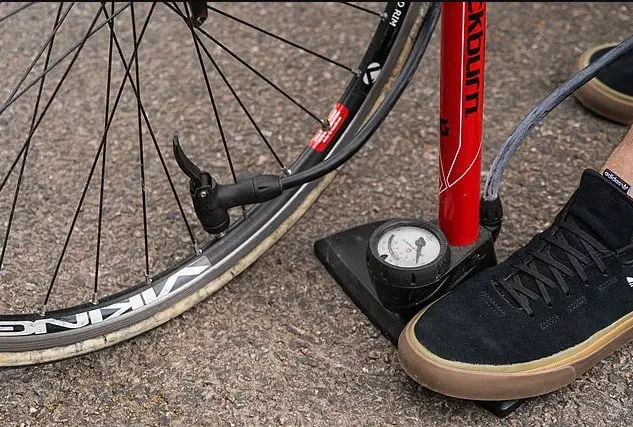Should you pump your tires until they are rock-hard, or are they good to go when they are only relatively soft to the touch? Read on to learn the ideal bike tire pressure for your specific bicycle.
The right pressure in your bike tire makes for smoother and more comfortable rides. Plus, it prevents pinch flats. But what’s the ideal bike tire pressure? Should you inflate your tires to the maximum, or is lower pressure better? Does tire pressure affect your cycling speed?
This quick guide will answer these and more related questions. Before we get into the nitty-gritty details, we highly recommend you get a hand pump with a pressure gauge if you don’t already have one.
What Should Bike Tire Pressure Be?
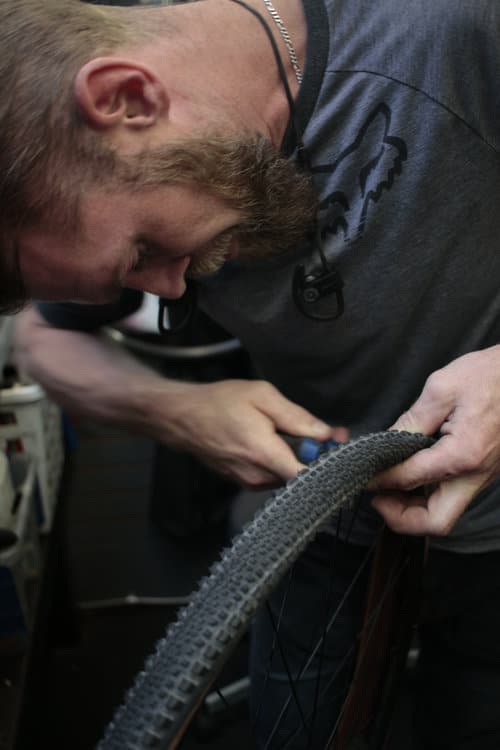
There is no one-size-fits-all when it comes to proper tire pressure and tire width because of rider weight differences. The recommended pound per square inch (psi) for every tire is different, and it is printed on the side of most bike tires.
There are other ideal options different pressures for a few PSI for appropriate rider’s weight to give you a more comfortable ride for different tracks. Some of them include 130 psi, 100 psi, 40 psi and 30 psi. These mountain bike tires are excellent choices for bumpy terrain or a smooth surface. Improve traction from a performance standpoint with personal preference road tires for more grip and perfect pressure.
Still, tire pressure is not a specific psi number. Instead, it is a recommended range to make room for factors, such as riders’ weight and temperature, among other considerations. For example, a psi range could be between 90 and 120.
If your bike tires don’t indicate a psi range, use the guideline below for different bike types as a basic rule of thumb for pumping bike tires.
Road bike
If you own a road bike, you’re likely racing on smooth terrains most of the time since that’s what the tires are designed to do. That means you’ll want the tires to roll easily, which is what high air pressure can do.
In most cases, the psi range would be anywhere from 80 and 130 psi. But since road bikes are built for speed, it is common to find racers going above this range and inflating their bike tires to around 160 psi.
Although compressing tires with bare hands isn’t a very accurate way to determine air pressure, here’s a quick tip to help you out if you ever find yourself inflating a road bike tire without a gauge. Try to squeeze the tire. You will have a difficult time doing so once the tire is at 100 psi.
More: Do All Bike Tires Have Tubes?
Mountain bike
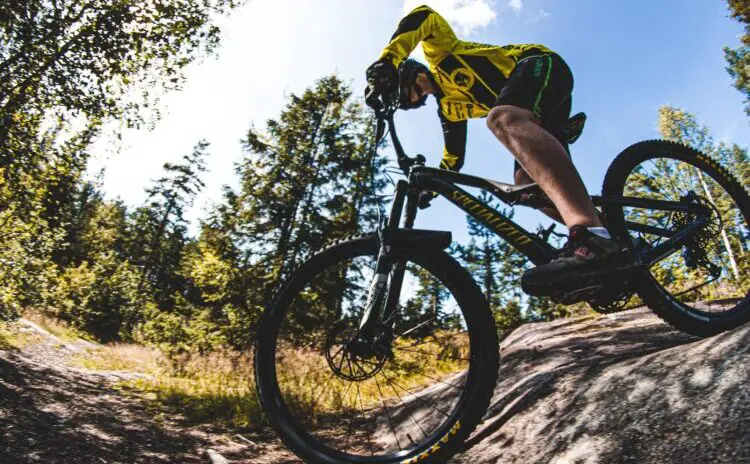
What about MTBs – what should mountain bike tire pressure be? MTBs are designed to fly over loose surfaces and off-road tracks. For this reason, their tires are typically chunky to offer amble grip on loose terrain.
Too much air in the tires can lead to a jolty ride because of too much bounce. On the flip side, lower pressure in mountain bike tires will allow the tire to have more contact with the surface and provide more traction.
The recommended pressure range for most mountain bike tires is between 30 and 50 psi. However, it is not uncommon to find 25 to 40 psi ratings on some mountain bikes.
Dirt bike
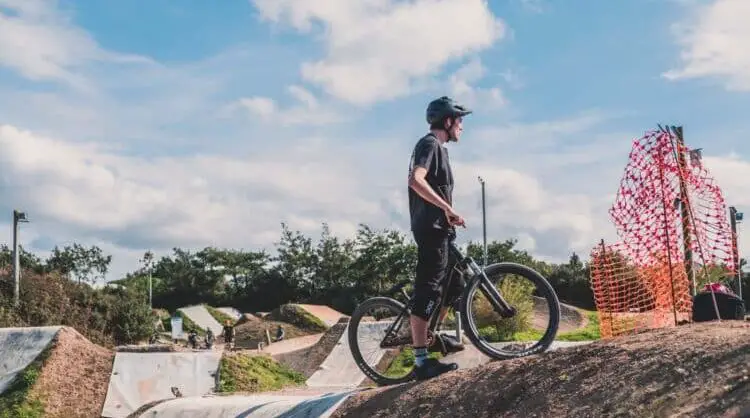
While the ideal tire pressure for a dirt bike will vary between specific terrains, a generally good air pressure range would be anywhere from 8 to 18 psi.
Most dirt bike riders will stay within 11 to 14 psi, but an optimal pressure for dirt bike riding would be 12.5 psi in the rear tire and 12 psi in the front tire. These will allow you to maintain good contact with the ground, even at high speeds.
Keep in mind that a regular automotive tire pressure gauge is not likely to give an accurate reading if you’re aiming for the 12 psi range or thereabout. Your best bet would be to use a low-pressure tire gauge that’s designed to accurately read low pressures.
More: Why Does My Bike Tire Keep Going Flat?
26” bike tire
Generally, 26-inch tires are typically found on mountain bikes, comfort hybrid bikes, and modern beach cruiser-type bikes. Inflating a 26” bike tire to a range of between 30 and 50 psi is generally considered ideal.
Does Bike Tire Pressure Affect Speed?
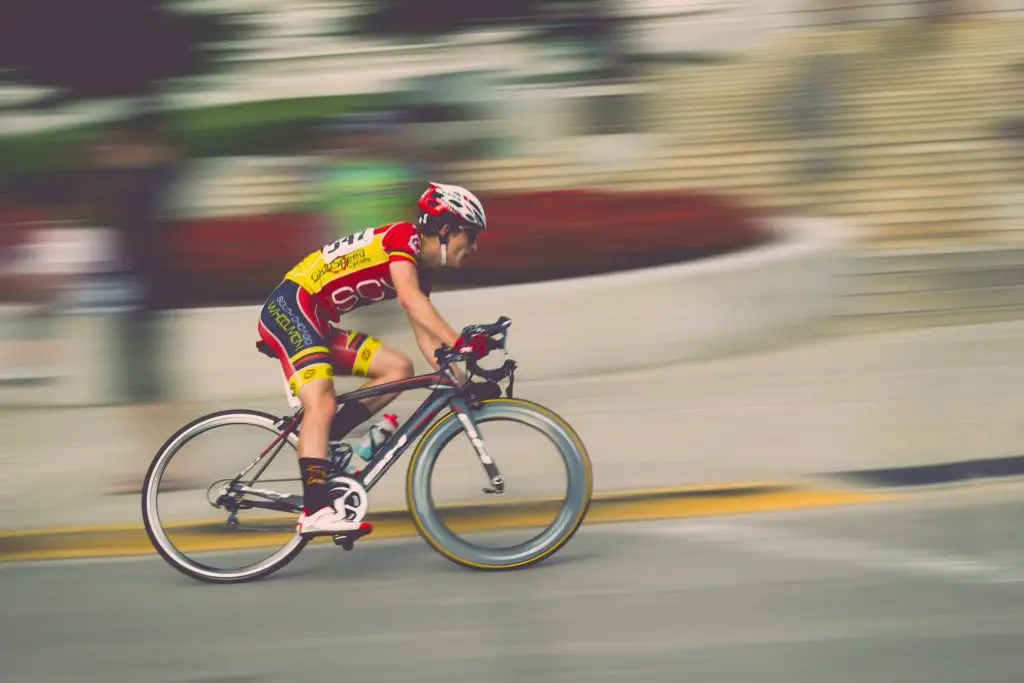
Yes, bike tire pressure affects cycling speed. But whether you go faster or slower will depend on how high or low the pressure is.
It is a common myth that overly high pressure will make you go faster. Pumping up your tires to the maximum pressure may feel faster during rides, but it actually has the opposite effect – you will go slower. Similarly, very low tire pressure can affect your speed, slowing you down in the process.
Overinflated tires can cause higher vibration during cycling that makes it appear as if you are moving faster. But “feeling fast” is not the same as going fast. You only feel fast because of the up and down motion or bounce that affects your grip during rides.
On the other hand, extremely low bike tire pressure slows you down for the same reason that construction vehicles or equipment with giant fat tires run slower. The low psi will maintain traction and absorb bumps but won’t go fast.
Here’s a general guideline that can help you ride faster on your bike:
- On a smooth track, higher pressure doesn’t affect you so much since there are nearly zero bump or traction issues. That’s because there is less deformation or “flatness” at the tire’s bottom that could use more energy.
- On a gravel road, high pressure in bike tires will reduce forward momentum since the tires will keep bouncing up and down the road. That’s because overinflating the tires will prevent them from deforming and absorbing shocks. Less tire pressure is not only more comfortable on gravel roads but also more efficient.
- Aim for a midpoint bike pressure if you want to ride on a regular paved road. You don’t want the tires to be too soft or rock hard. However, factor in your weight when putting air in the tires.
Where to Put Air in Bike Tires?
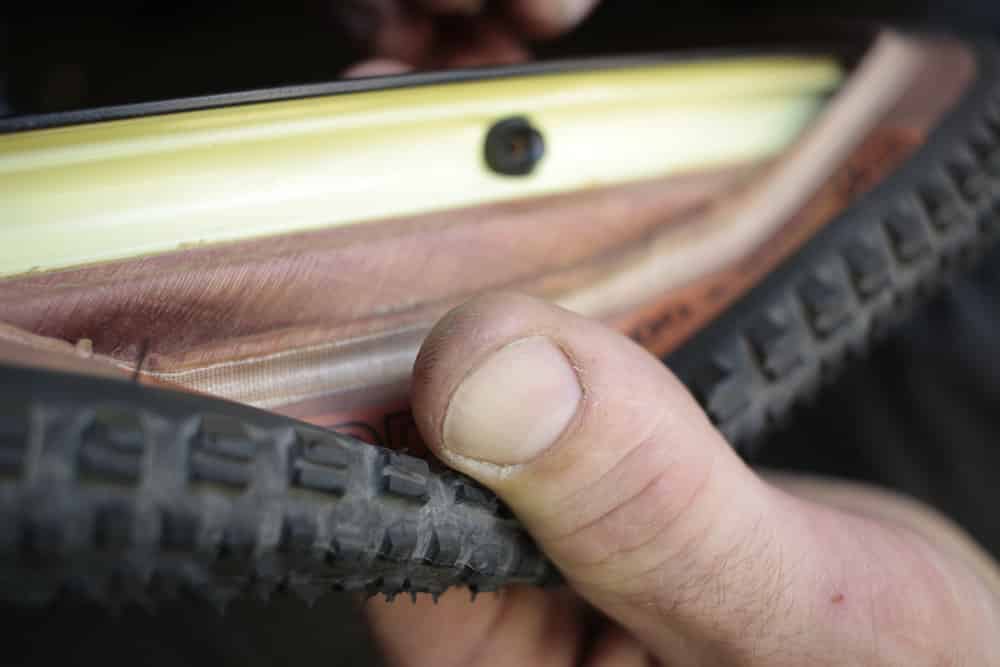
Pumping a bike tire is usually an easy task provided you have the right tool for your type of tire. Typically, a bike pump should do the trick, especially if you want to get air slowly into your tire. Make sure you use a pump that has a gauge to read the pressure as you pump.
If you don’t have a pump and can’t borrow one from a friend, a gas station pump is the next best thing. However, use this option with extreme caution by inflating your tires in small bursts. Make sure you are constantly checking the pressure because the pump in a gas station is extremely high pressure and can explode your tires if you don’t monitor it closely.
While an electric pump or compressed air pump might work, they are usually not a good choice for dirk bike tires because they tend to fill air too quickly. That’s not what you want for a dirt bike tire since it is more efficient at low pressure.
More: Clincher vs Tubular: Which Is Better?
What to Do if You Can’t Get Air into Your Bike Tire
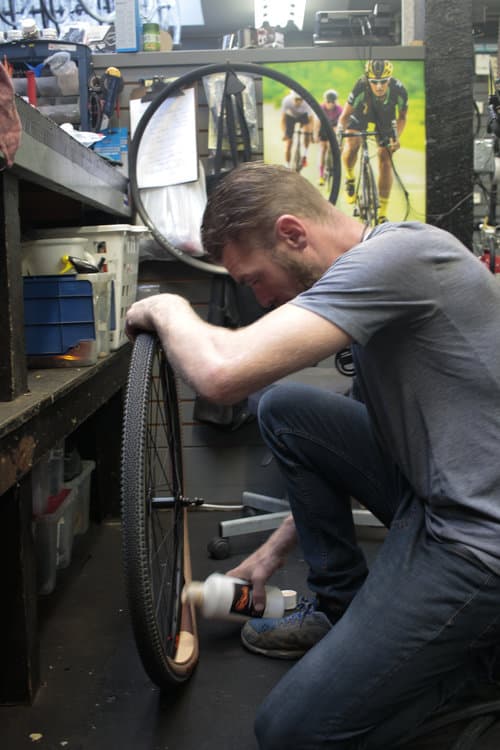
If you can’t get air into your bike tire, it could be for a couple of reasons. First, you may be pressuring inside the pump instead of inflating the tire. This happens when the pump is not properly placed on the valve. After a few pumps, you will notice the handle of the pump becoming hard, making it difficult to pump.
If this is the case, make sure you unscrew the top of the valve (for a Presta valve), and properly place the pump on the valve before pumping.
If you have a Schrader valve, make sure the pin on the valve is pressed down, or else air won’t get into the tire. Push down the pump to seat fully on the valve before pumping air.
More: Maxxis Ardent Review: Is It Worth It?
Conclusion
The recommended bike tire pressure varies depending on the bike type. Use the ranges in this quick guide to determine what suits your bike, and make sure to regularly check the air pressure in your tires before heading out.
